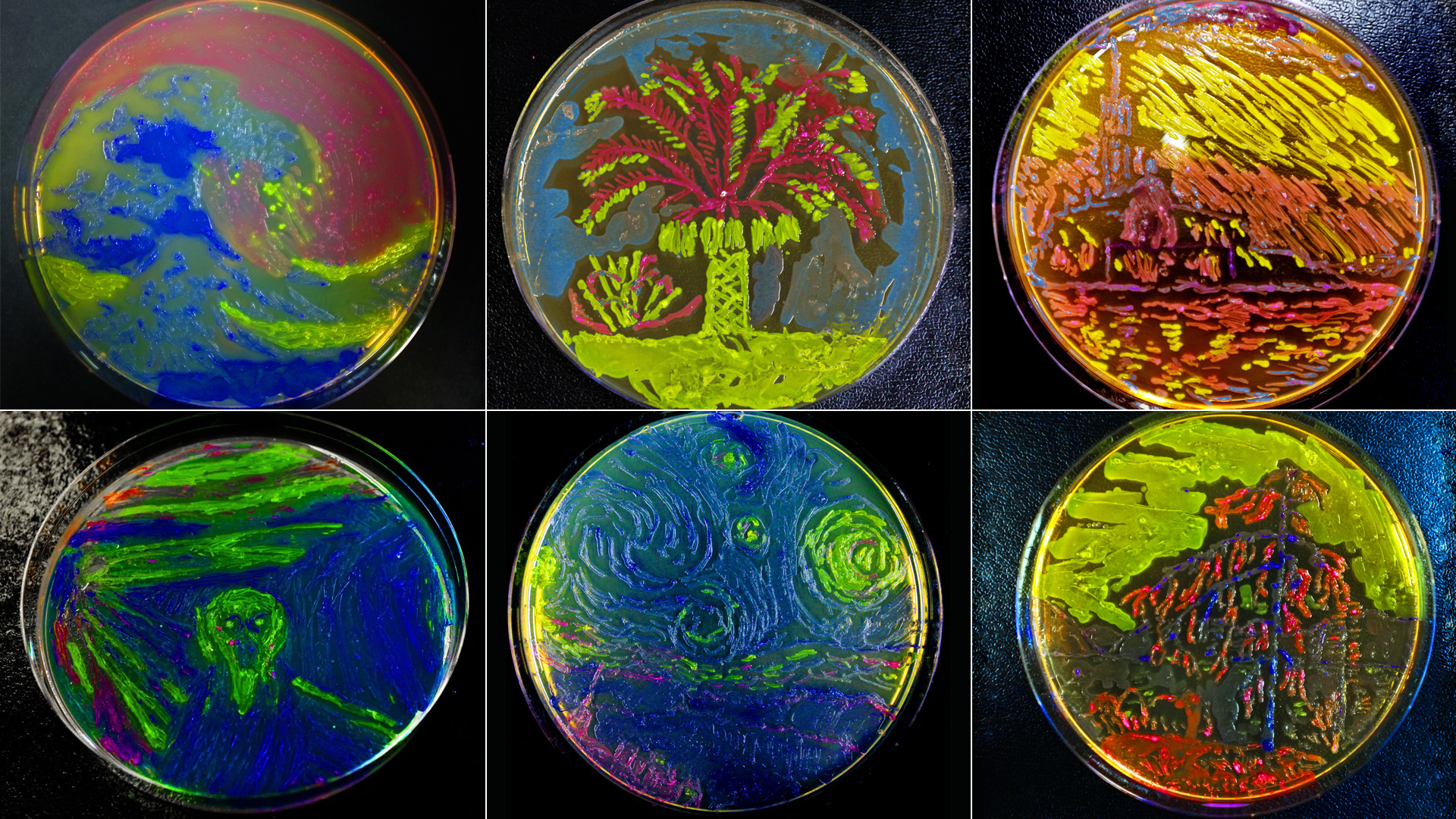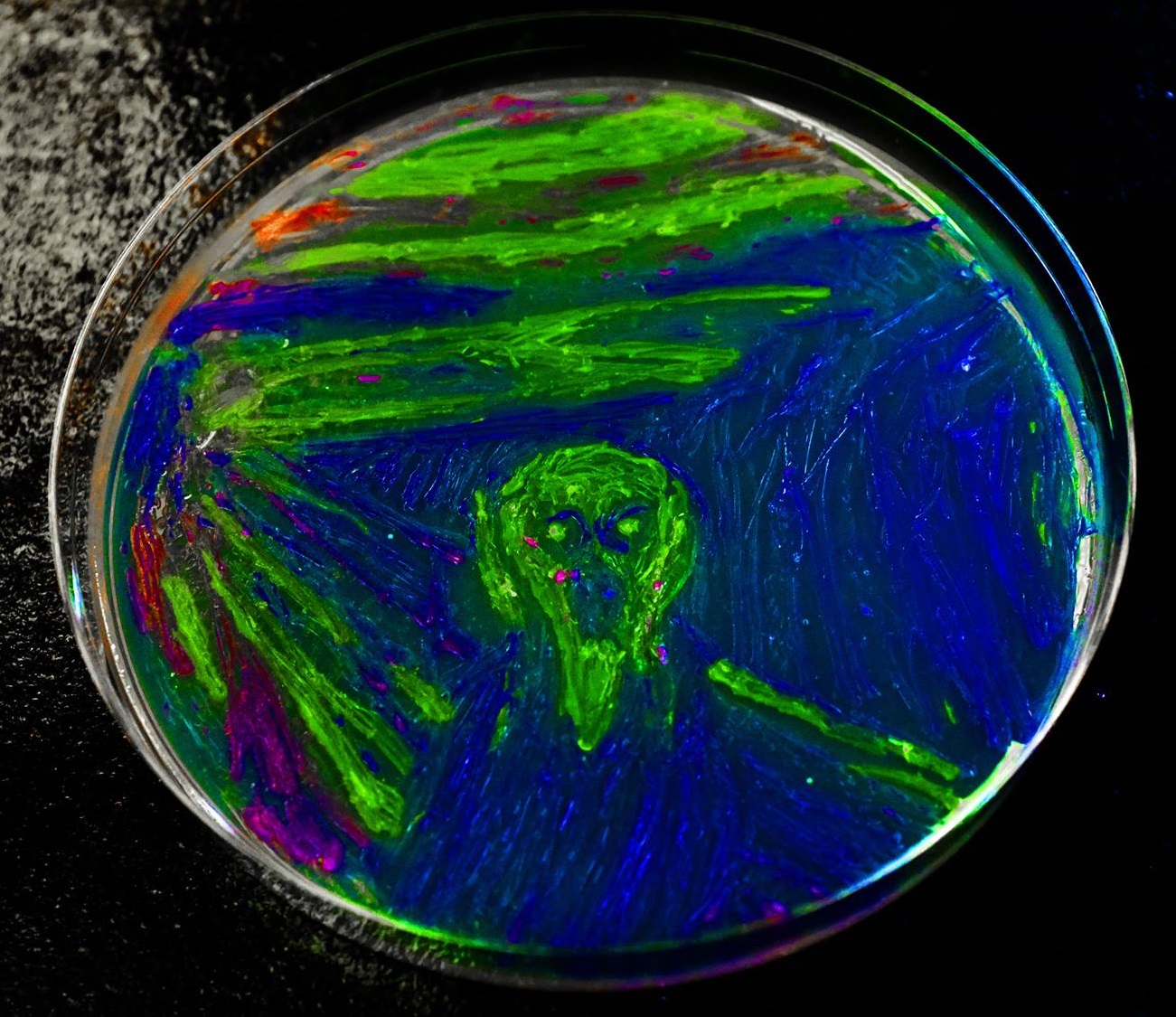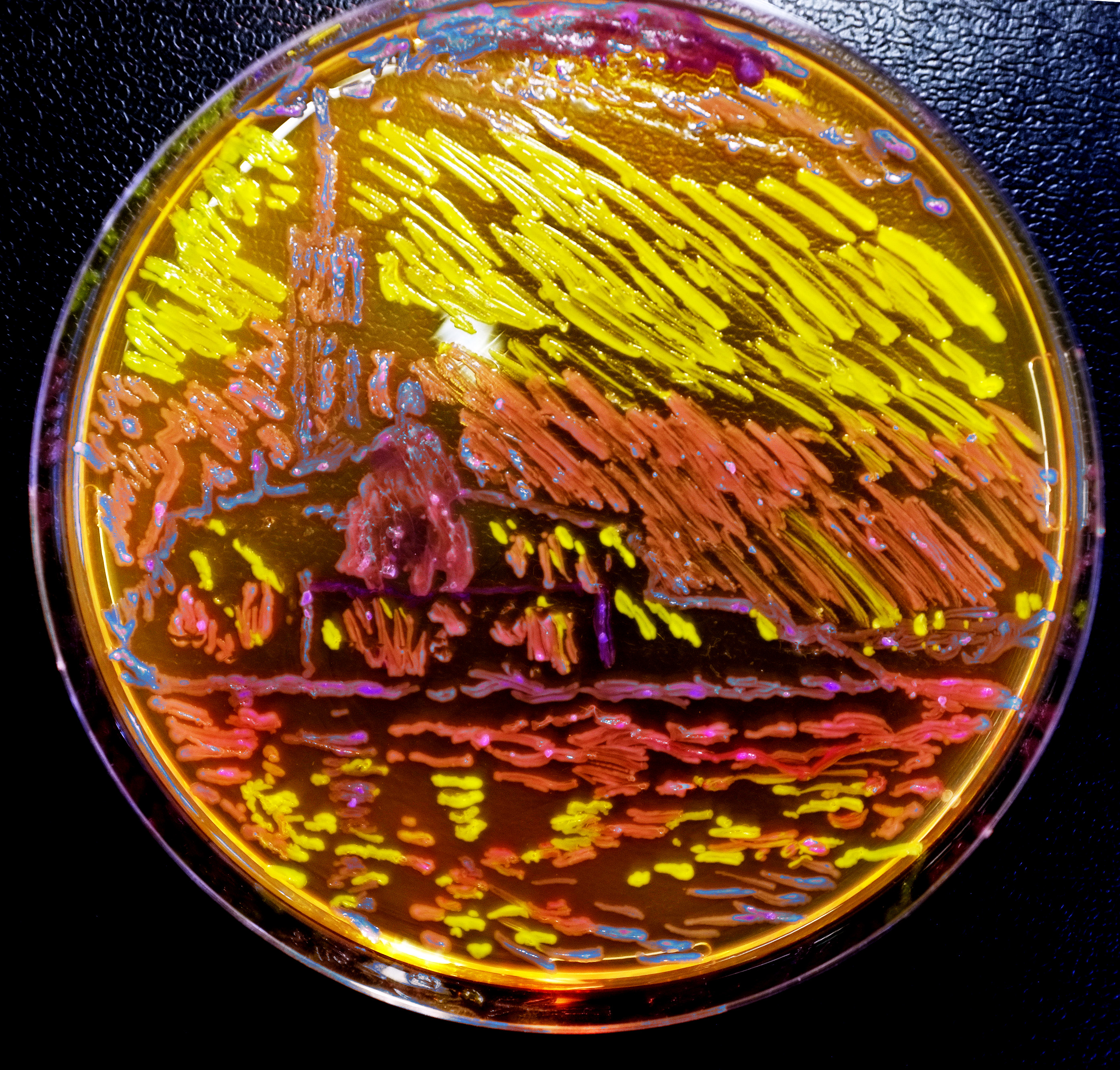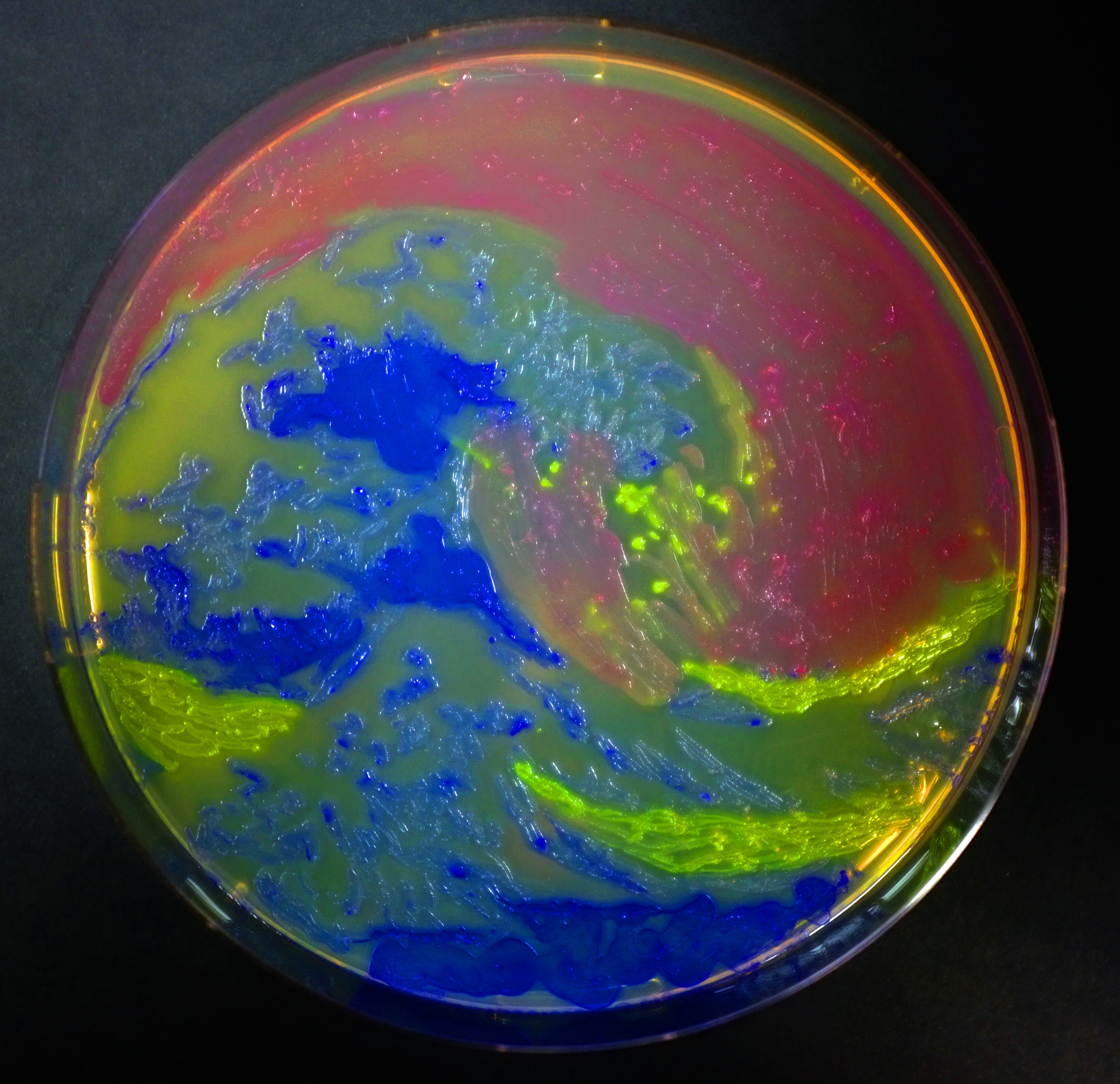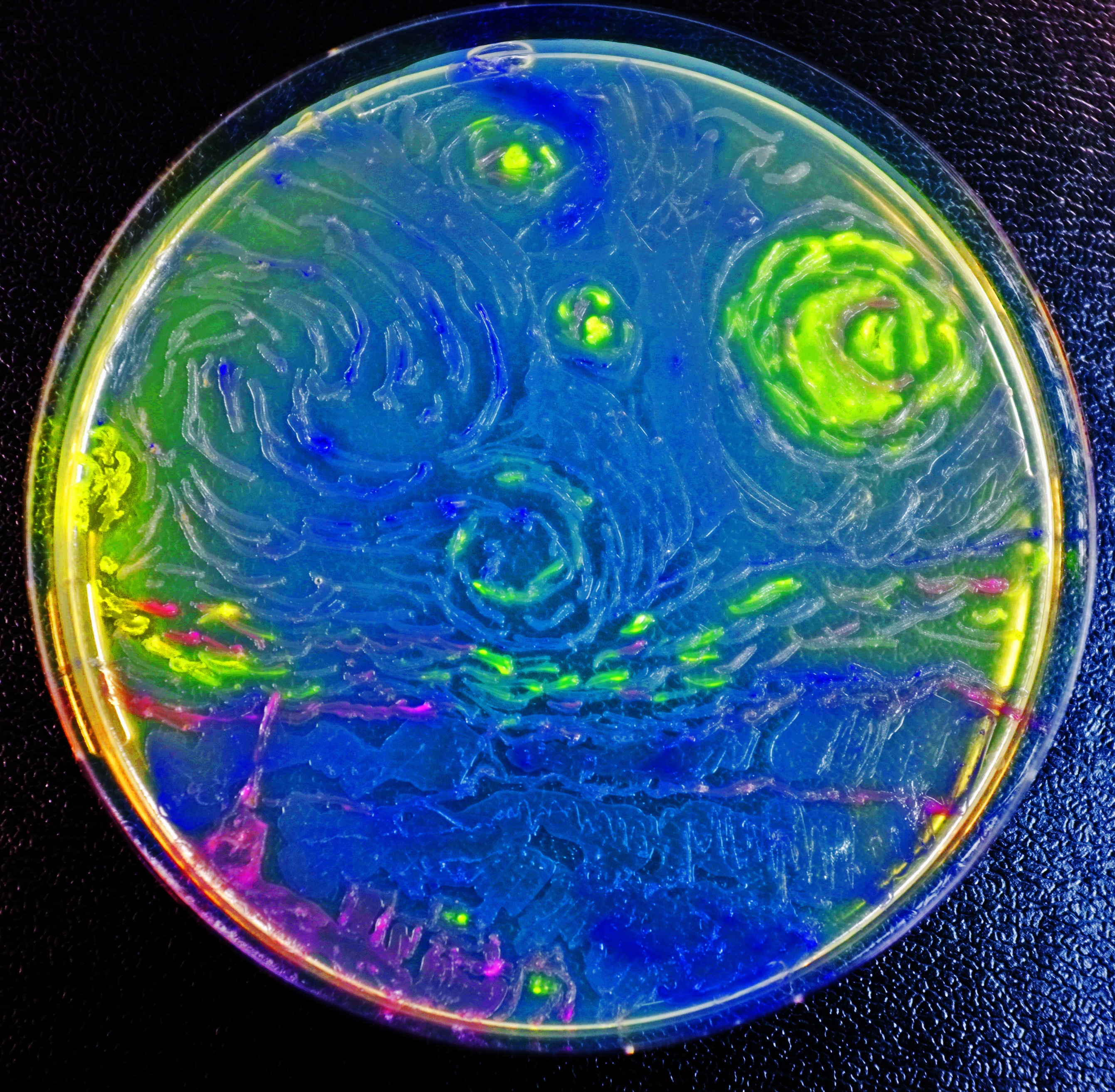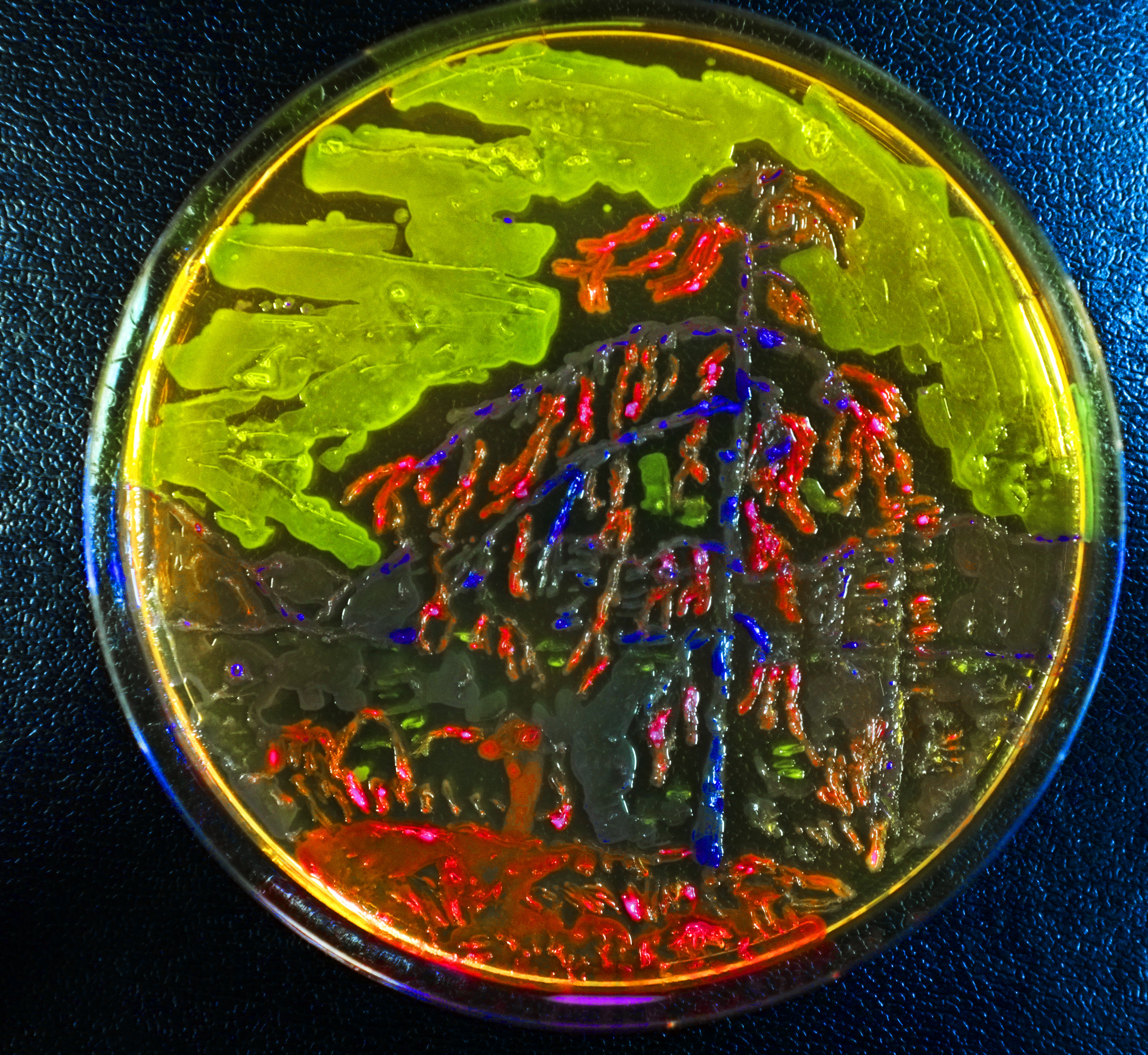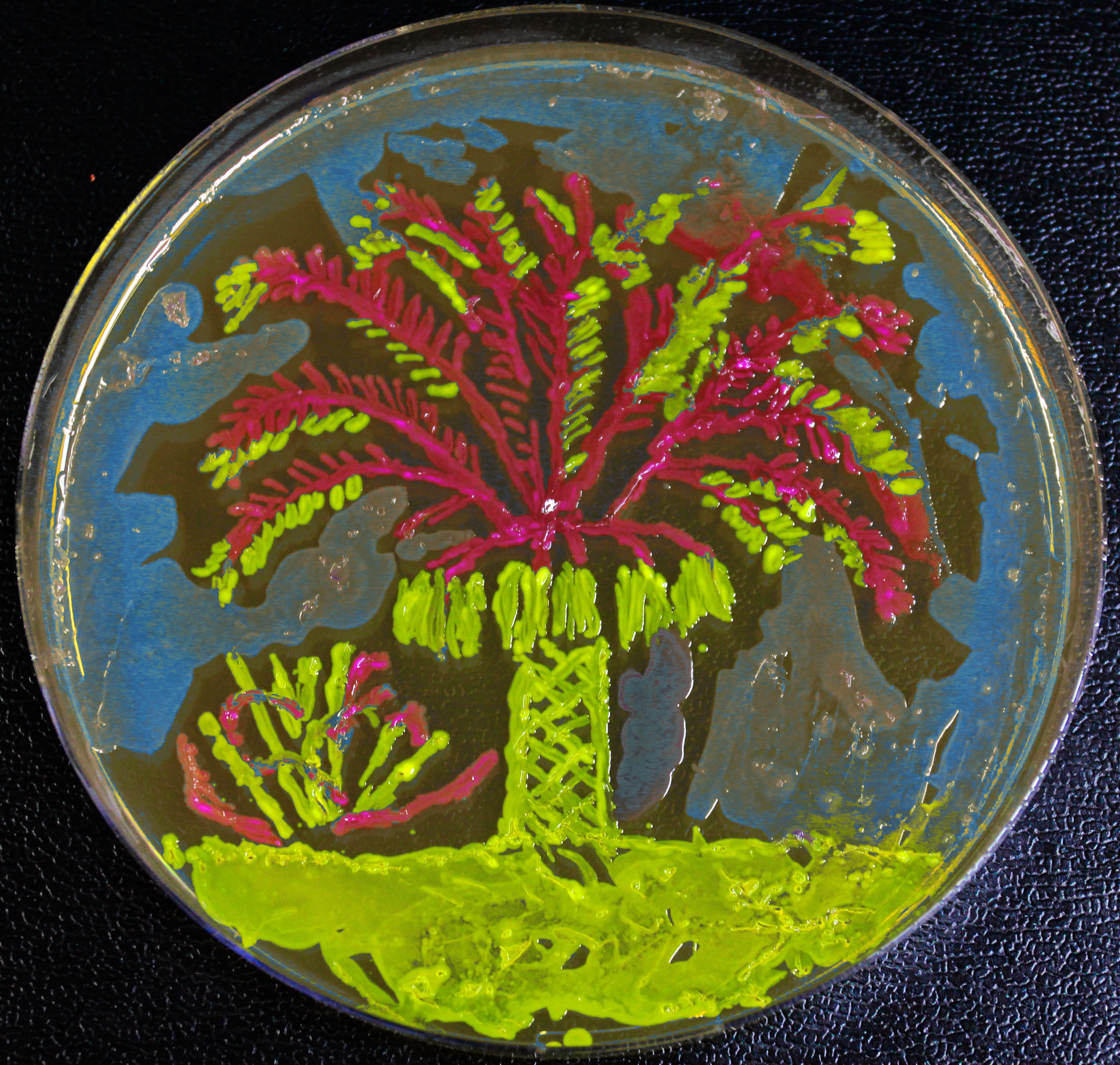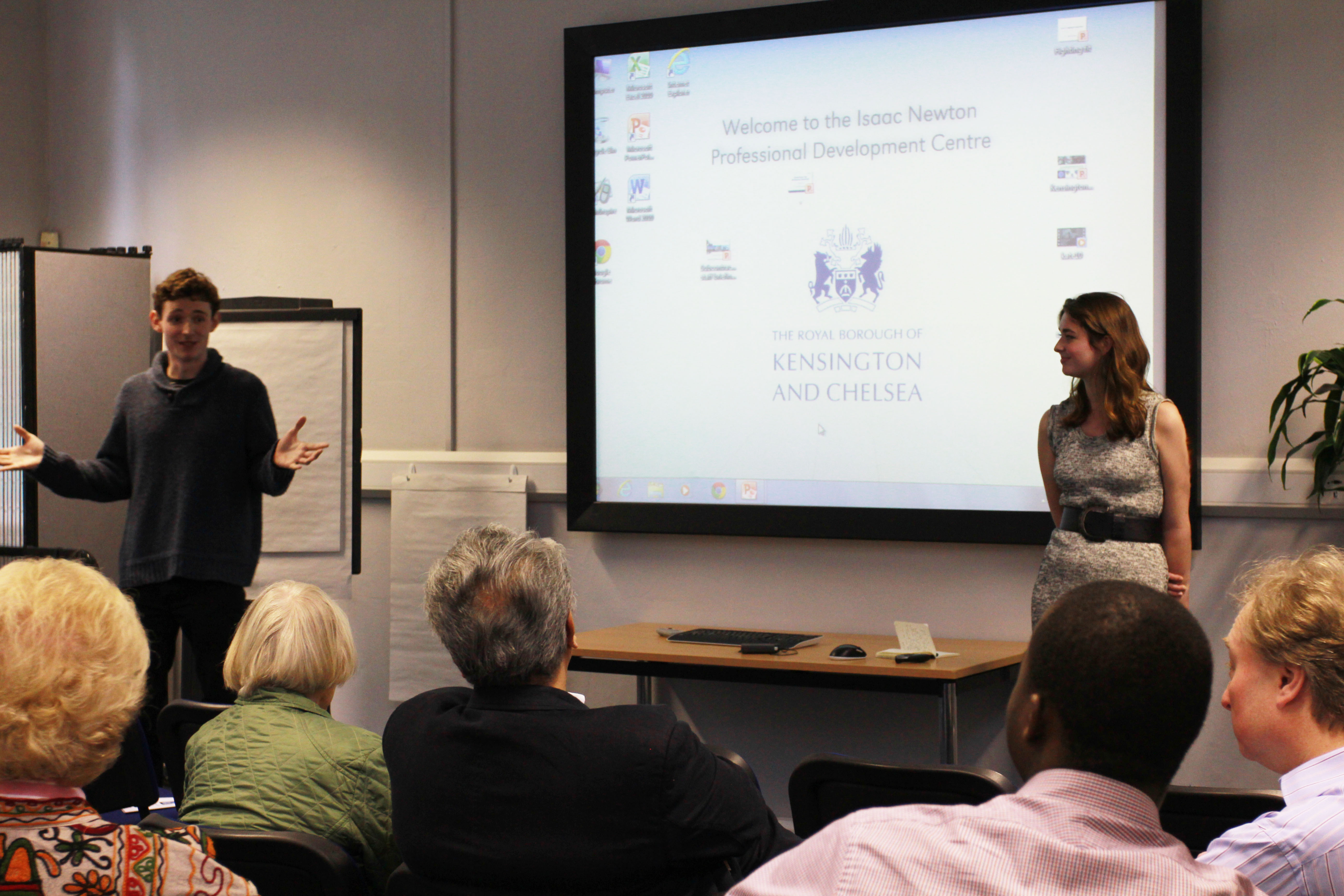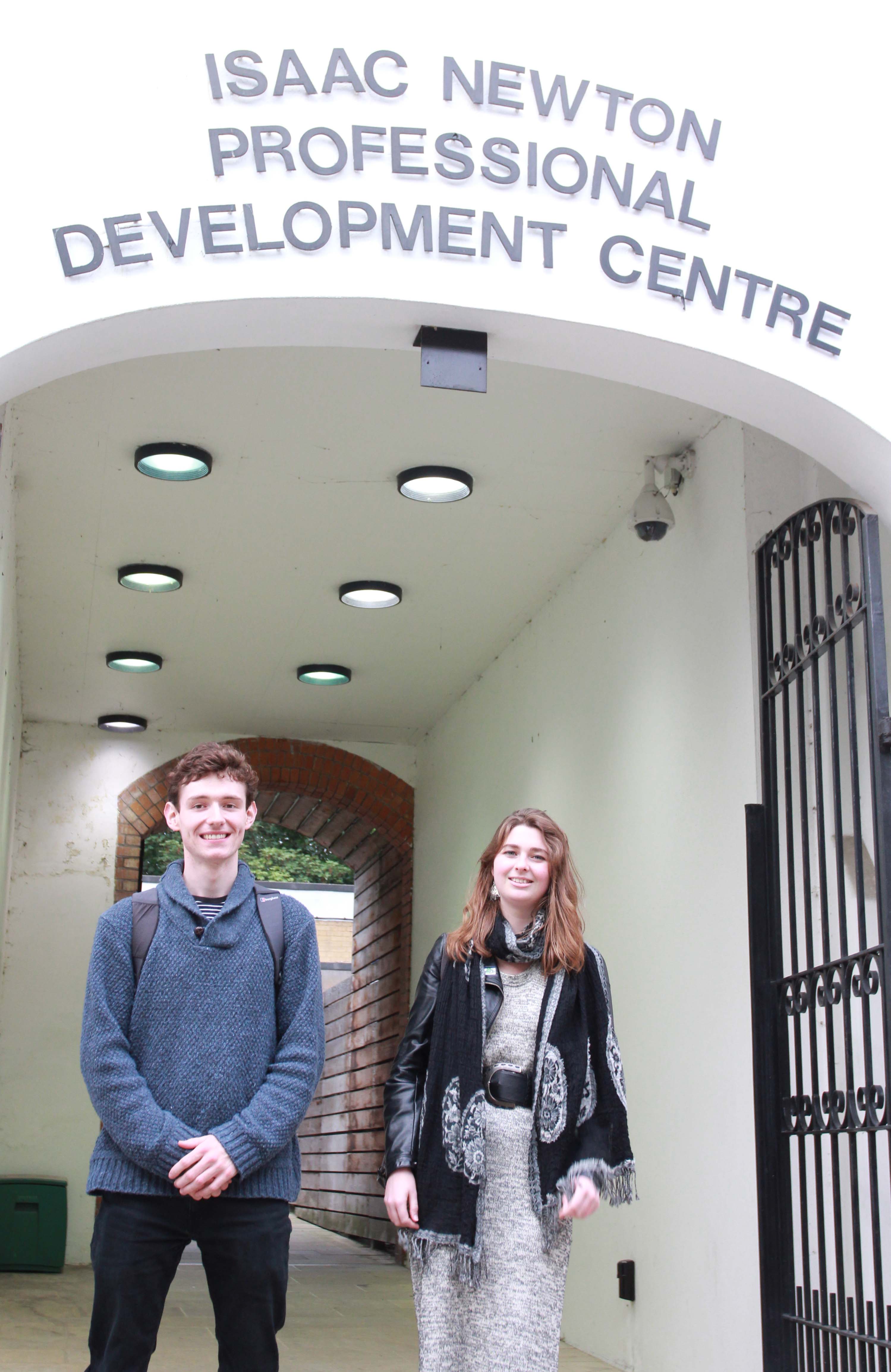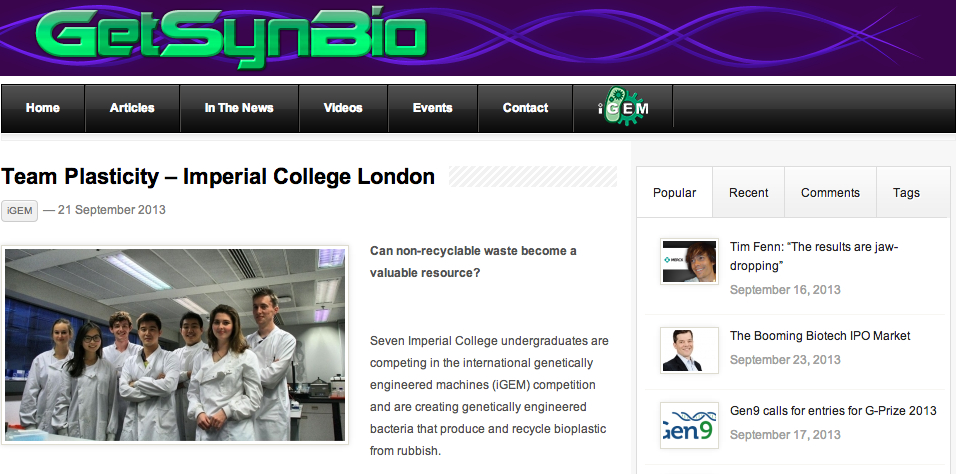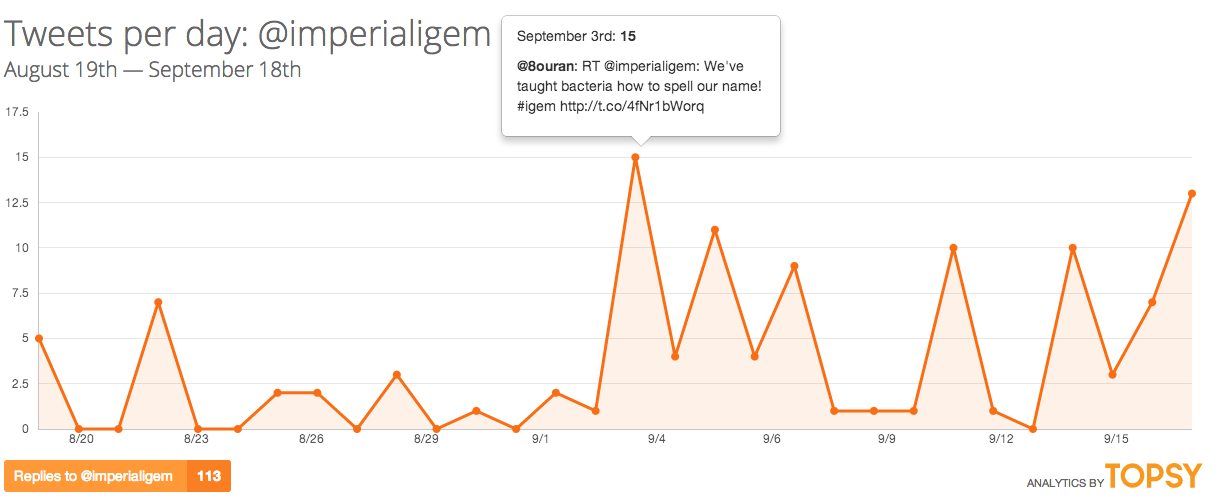Team:Imperial College/Communication work
From 2013.igem.org
| Line 4: | Line 4: | ||
We communicated our project through an array of different media and social media platforms. We wanted to learn whether people value the stuff they throw away, what they thought about Synthetic Biology, our project and to spread the word about iGEM. | We communicated our project through an array of different media and social media platforms. We wanted to learn whether people value the stuff they throw away, what they thought about Synthetic Biology, our project and to spread the word about iGEM. | ||
| - | |||
| - | |||
| - | |||
| - | |||
| - | |||
| - | |||
<h2>Living Art</h2> | <h2>Living Art</h2> | ||
We wanted to communicate Synthetic Biology in an engaging and novel way. We developed a method of painting with highly cultured E. coli. Our paintings are incredibly popular and have inspired the general public to have discussions with us about our project and SynBio as a whole. Our paintings will also be submitted to a SynArt exhibition in collaboration with the ATOMS Turkiye iGEM team. | We wanted to communicate Synthetic Biology in an engaging and novel way. We developed a method of painting with highly cultured E. coli. Our paintings are incredibly popular and have inspired the general public to have discussions with us about our project and SynBio as a whole. Our paintings will also be submitted to a SynArt exhibition in collaboration with the ATOMS Turkiye iGEM team. | ||
| + | |||
| + | [[File:CombinedBacteriaArt.jpg|1000px]] | ||
| + | <p style="clear">A vignette of all of our bacterial art.</p> | ||
| + | |||
[[File:ZScream.jpg|left|500px|One of Edvard Munch's greatest successes, The Scream, now expressed in all new splendour by the novel art form of <i>E. coli</i>]] | [[File:ZScream.jpg|left|500px|One of Edvard Munch's greatest successes, The Scream, now expressed in all new splendour by the novel art form of <i>E. coli</i>]] | ||
| Line 39: | Line 37: | ||
<p style="clear: left"><br><br><br><br>M.C. Escher was a woodcut artist, making art from trees. Here we have recreated his work by streaking media with Escherichia coli to form one of his art pieces, the Palm. Escher was a dutch artist and completed the [http://en.wikipedia.org/wiki/Woodcut xylograph] in 1933. Xylographs are produced by etching and carving an image into a block of wood. The non-printing parts are removed and the printing process can commence, allowing the printing of the Palm to be done in black and white.</p> | <p style="clear: left"><br><br><br><br>M.C. Escher was a woodcut artist, making art from trees. Here we have recreated his work by streaking media with Escherichia coli to form one of his art pieces, the Palm. Escher was a dutch artist and completed the [http://en.wikipedia.org/wiki/Woodcut xylograph] in 1933. Xylographs are produced by etching and carving an image into a block of wood. The non-printing parts are removed and the printing process can commence, allowing the printing of the Palm to be done in black and white.</p> | ||
| - | |||
| - | |||
| - | |||
<h2 class="clear">Celebration of Science</h2> | <h2 class="clear">Celebration of Science</h2> | ||
| Line 49: | Line 44: | ||
[[File:Celebration_of_science.png|600px]] | [[File:Celebration_of_science.png|600px]] | ||
[[File:Isaac_Newton.png|255px]] | [[File:Isaac_Newton.png|255px]] | ||
| + | |||
| + | <h2>We asked people the question, what would you make with a 3D printer?</h2> | ||
| + | |||
| + | https://static.igem.org/mediawiki/2013/b/b3/What_would_you_3d_print.png | ||
| + | |||
| + | The images are representative of the responses we received through twitter, Facebook and other communications. | ||
| + | |||
Revision as of 22:25, 1 October 2013
Contents |
Communicating our Project
We communicated our project through an array of different media and social media platforms. We wanted to learn whether people value the stuff they throw away, what they thought about Synthetic Biology, our project and to spread the word about iGEM.
Living Art
We wanted to communicate Synthetic Biology in an engaging and novel way. We developed a method of painting with highly cultured E. coli. Our paintings are incredibly popular and have inspired the general public to have discussions with us about our project and SynBio as a whole. Our paintings will also be submitted to a SynArt exhibition in collaboration with the ATOMS Turkiye iGEM team.
A vignette of all of our bacterial art.
The Scream, a masterpiece, clearly depicts an individual on a pier with a haunting expression with a heady back drop of a yellow and red sky. Reforging this painting with bacteria has created 5th rendition of this magnificent work of art. Originally painted in 1893 by Edvard Munch, The Scream characterised a tempestuous time in art as a precursor to the advent of Expressionism. As such, it is perfectly placed to represent the potential power of SynBio to revolutionise the modern world, and this in and of itself represents the verve behind team Plasticity to add value to waste with our MAPLE system.
Claude Monet's San Giorgio Maggiore, depicted by highly cultured E. coli.
San Giorgio Maggiore is an island in Venice, best known for the prominent church that sits upon it. In 1908, Claude Monet produced this impressionist painting. It was originally received with great awe due to the vibrancy of the colours. Similarly with the bacterial copy, it also shows great vibrancy of colour, courtesy of the GFP in the bdh2, which appears yellow and the RFP present in the stress response sensor, providing the red pigment. Indeed the radiance of the sunset is reflected magnificently in the calm waters of the Laguna Veneta.
To the left is depicted Hokusai's world renowned masterpiece, the Great Wave of Kanagawa. The painting depicts an enormous wave off of the Japanese prefecture of Kanagawa. The key difference here is the presence, or lack thereof of Mount Fuji, which has been swallowed by the ominous blood red sky that overshadows the entire scene. The work was produced during the Edo Period of Shogunate rule, sometime between 1830-1833 and does not constitute a painting of a deadly tsunami as many people commonly assume.
Painted by Vincent van Gogh in 1889 with oil on canvas, Starry Night depicts a night scene from Saint-Rémy-de-Provence. We can see here clearly the glowing crescent moon high in the sky, hovering over the deep blue hills beyond the town. Interestingly the scene was painted completely from memory the next day by van Gogh. It represents a point in the life whereby he was institutionalised due to incapacitation by nervous troubles.
Originally painted in 1917 by Tom Thompson, The Jack Pine is a symbolic work of art, representing one of Canada's most iconic native pine trees, found east of the Rocky Mountains. It is not to be confused with Canada's most well known broad-leaf Maple, for which the country is famous. The scene depicted is at evening with a serene backdrop into the fading light. Tom Thompson was a forerunner to the Group of Seven before its inception had even been brought about, such was the influence of this iconic painting.
M.C. Escher was a woodcut artist, making art from trees. Here we have recreated his work by streaking media with Escherichia coli to form one of his art pieces, the Palm. Escher was a dutch artist and completed the xylograph in 1933. Xylographs are produced by etching and carving an image into a block of wood. The non-printing parts are removed and the printing process can commence, allowing the printing of the Palm to be done in black and white.
Celebration of Science
From 20 to 28 September Kensington and Chelsea Council is staged a Celebration of Science. Distinguished guests from the scientific, political and academic worlds took part, as well as from the Arts. We were privileged to present synthetic biology and our project in the Isaac Newton Centre on the 28th of September.
We asked people the question, what would you make with a 3D printer?

The images are representative of the responses we received through twitter, Facebook and other communications.
GetSynBio Blog
Our project was featured on the GetSynBio Blog!
http://getsynbio.com/igem-page/
Imperial Bioengineering Departmental News
Our project was featured on a departmental newsletter. In addition to informing our colleagues about our project we also conveyed the importance of the social challenges facing waste management and recycling.
https://workspace.imperial.ac.uk/bioengineering/Public/Newsletters/Newsletter%20August%202013.pdf
Online newspaper
This automated online newspaper collates the top and most popular news stories from our twitter and facebook feeds.
Check out our online newspaper for news and updates from our project, the iGEM community and global discussions about waste management http://paper.li/imperialigem/1377382636
Social Media

 "
"




